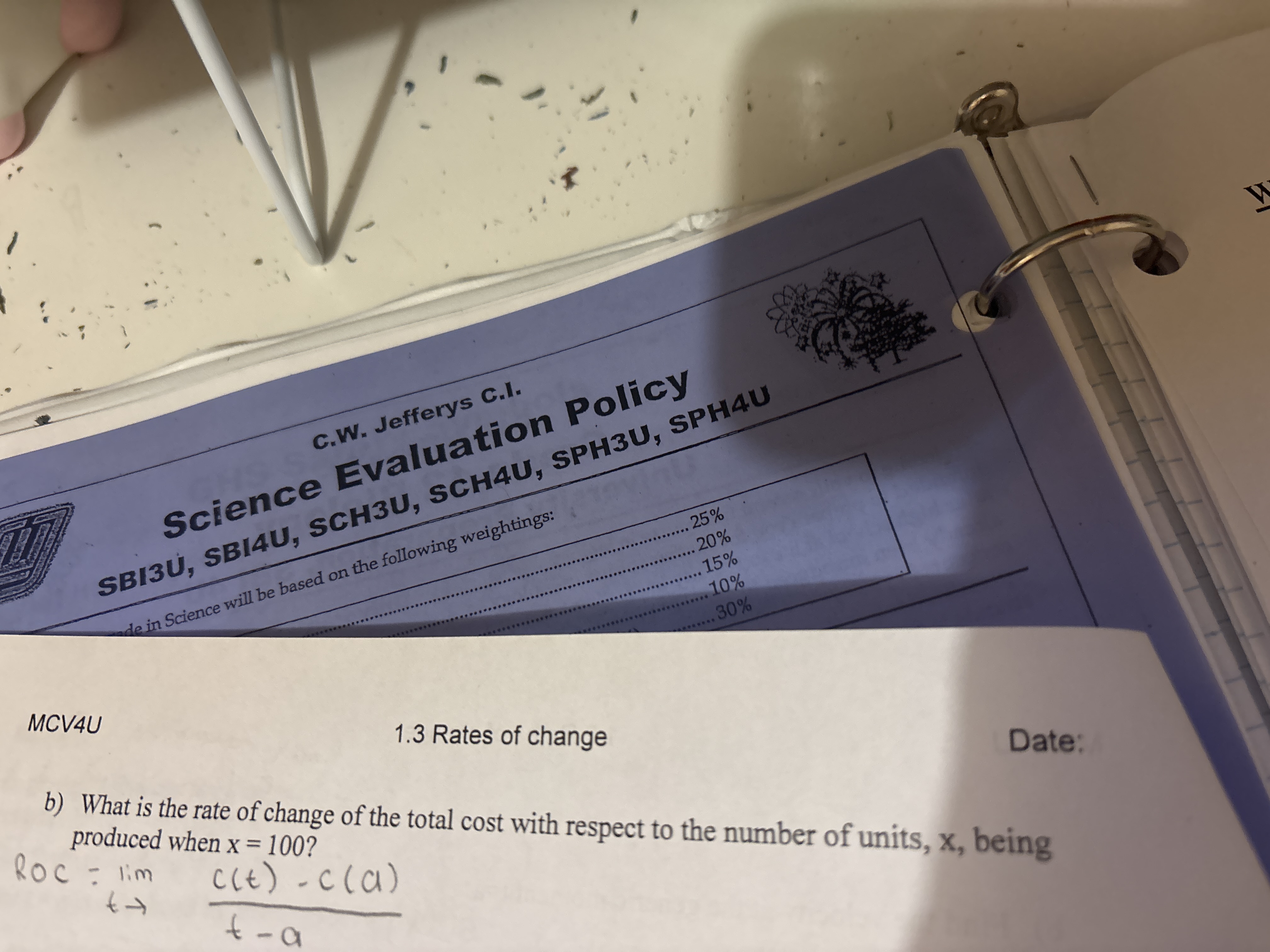What is the rate of change of the total cost with respect to the number of units x, being produced when x = 100%?

Understand the Problem
The question is asking for the rate of change of total cost with respect to the number of units produced when x equals 100%. This relates to the concept of rates of change in calculus, specifically how functions change at a given point.
Answer
The rate of change is given by \( 2a(100) + b \).
Answer for screen readers
The rate of change of total cost with respect to the number of units produced when ( x = 100% ) is given by ( 2a(100) + b ), where ( a ) and ( b ) are constants from the cost function.
Steps to Solve
- Understand the Rate of Change Concept
The rate of change of a function describes how the function's output changes with respect to its input. In this case, we want to find the rate of change of total cost ( C(x) ) with respect to the number of units ( x ).
- Formulate the Derivative
To find the rate of change at a specific point, we will use the derivative of the cost function ( C(x) ). The rate of change can be expressed as: $$ \text{Rate of Change} = \frac{dC}{dx} $$
- Evaluate the Derivative at ( x = 100% )
We will need to compute the derivative ( \frac{dC}{dx} ) and then substitute ( x = 100% ) into this derivative. Assuming we have a function ( C(x) ):
- Differentiate ( C(x) ).
- Substitute ( x = 100 ) into the derivative.
- Example Calculation
For example, if ( C(x) = ax^2 + bx + c ) (where ( a, b, c ) are constants), the derivative can be calculated as: $$ \frac{dC}{dx} = 2ax + b $$
Substituting ( x = 100 ): $$ \frac{dC}{dx}\bigg|_{x=100} = 2a(100) + b $$
- Calculate the Result
After substituting ( x = 100% ), simplify to find the final numerical value of the rate of change.
The rate of change of total cost with respect to the number of units produced when ( x = 100% ) is given by ( 2a(100) + b ), where ( a ) and ( b ) are constants from the cost function.
More Information
The rate of change provides insight into how costs behave as production levels vary. A high rate indicates increasing costs with more production, while a low or negative rate suggests efficiency or reduction in costs.
Tips
- Not differentiating the function correctly: Ensure to apply the correct differentiation rules.
- Forgetting to substitute correctly: Double-check that you substitute the correct value of ( x ) into the derivative.
AI-generated content may contain errors. Please verify critical information